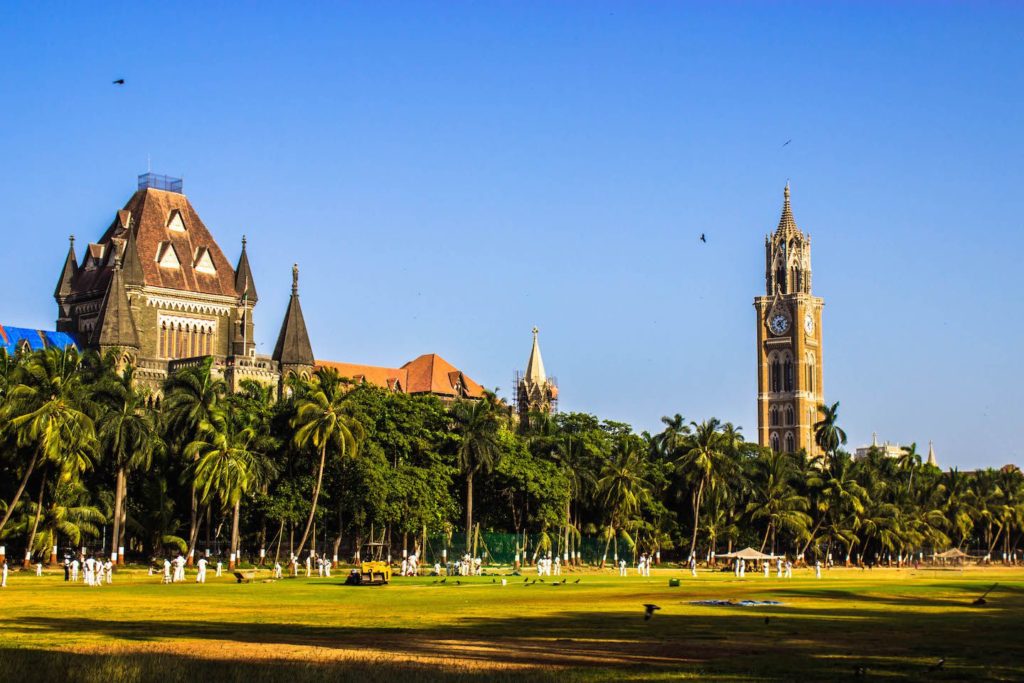The US Civil War, Globalization and the City of Bombay
The structure of Bombay is intimately tied to the history of the United States in ways that illustrate the long arc of globalization. At the heart of Bombay, around the Oval Maidan, on which cricket games are often played, one can see many of Bombay’s iconic Victorian buildings including the University of  Bombay, the Bombay High Court and the Rajabai clock tower. These buildings and many others were begun in the late 1850s and 1860s during the Bombay boom; a boom brought about by America’s Civil War.
Bombay, the Bombay High Court and the Rajabai clock tower. These buildings and many others were begun in the late 1850s and 1860s during the Bombay boom; a boom brought about by America’s Civil War.
The U.S. South began the civil war by embargoing cotton exports and burning 2.5 million bales of cotton in order to create a shortage and bend the world to its will. The embargo didn’t lead to Britain’s support, however, and by the time the South realized it had shot itself in the foot the North imposed its own blockade. Cotton prices skyrocketed–between 1860 and 1863-1864 prices rose by a factor of four on average and at times by a factor of 10. As cotton exports from the United States fell, exports from Persia, Egypt and especially India boomed. As Sven Beckert put it:
The bombardment of Fort Sumter…announced that India’s hour had come.
In India farm land was switched over to cotton, railroads and telegraphs were built uniting cotton producing areas in Bihar with cotton’s chief trading center and port, Bombay. Production and exports boomed. Vast fortunes were made from the cotton trade and the speculation it engendered; fortunes that were plowed into universities, libraries and many of the great buildings that mark Mumbai today. In fact, the Back Bay Reclamation project began at this time so some of the very ground that Mumbai sits upon has its roots in the American Civil War.
Influences flowing in the reverse direction were at least as strong. The decline in cotton exports from the South created mass unemployment in Great Britain and it was not out of the question that Britain would side with the South. Beckert quotes the investment bank Baring Brothers:
In the spring of 1862, Baring Brothers Liverpool expressed their view that war between the United States and Great Britain was less likely “provided we get a large import from India.”
Fortunately, increased Indian cotton production alleviated the “Cotton famine” and reduced the South’s bargaining power. Thus, “Indian cultivators and merchants played a small role in contributing to Northern victory in the Civil War.”
General Robert Lee’s surrender at Appomattox ended the Bombay boom. As news of Lee’s surrender spread, market prices crashed and speculative fortunes were lost. The railways and the telegraphs, however, now linked India to the world. And at the heart of Bombay, the universities, the libraries and the civic institutions endured making Bombay, Urbs Prima in Indis.